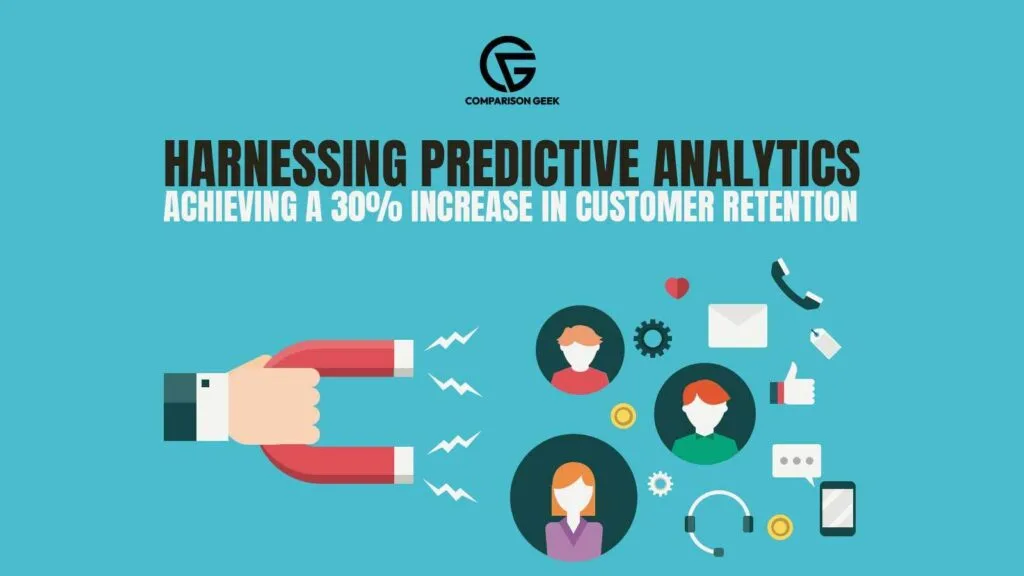Predictive analytics has become one of the most powerful tools for companies, giving an easy glimpse into customer behavior, so improvement strategies in retention can be designed appropriately. Companies can foresee what is required by the customer at what time, thereby cutting down churn effectively. This case study elucidates how predictive analytics can boost customer retention by 30%, an otherwise ailing retention strategy turned into a major success.
Table of Contents
ToggleUnderstanding the Challenge
The company faced growing customer churn, which cost revenues and customer acquisition expenses. General email campaigns and other traditional promotions were not effective in addressing the issue because they did not target specific customers individually. As a result, the marketing team worked blindly without understanding what drove the customers away.
They needed a smarter solution that could identify those at-risk customers and predict behaviors based on data patterns. Predictive analytics seemed the best choice for gaining actionable insights into customer habits and preferences.
Setting Up Predictive Analytics
The company first gathered the data spread across various channels such as purchase history, engagement history, and customer feedback. It analyzed the information to identify trends and patterns that usually led to inactivity or dissatisfaction before leaving the customers.
Next, they applied machine learning in building predictive models that calculated a “retention score” for every customer. These scores highlighted the likelihood of a customer leaving, helping the team prioritize those who needed immediate attention.
The integration of predictive tools into the CRM system of the company ensured that such insights were easily accessible by marketers, sales teams, and customer support staff. Employees were trained to interpret the data and use it for quick decisions regarding the campaigns and outreach efforts.
Implementing Targeted Campaigns
With predictive analytics at play, the company has moved from mass tactics to individualized ones. That is, they have developed re-engagement programs for those with low retention scores, that included targeted discounts, exclusive offers, and loyalty rewards for customers.
For example, in the case of customers with less activity, personal messages were posted with special offers on products already purchased. In turn, customers sending negative feedback were personally contacted by a representative from the support department to address their concerns.
Automated systems were further put in place to send real-time alerts and offers, ensuring the customer received timely communications. This personalized approach made for stronger bonds with the customer and showed them the company appreciated their business.
Tracking and Analyzing Results
Customer retention rates improved by 30% after a few months. Engagement rates skyrocketed as customers responded well to these personalized campaigns. Revenue improved, and the marketing team noticed a reduction in churn-related expenses.
The firm sustained this performance by continuously updating its predictive models with new customer data. In this manner, the strategies adopted by it remained relevant as customer behaviors changed over time. The team also monitors the campaign’s performance, using the insights gained to refine their approach yet further.
Benefits Beyond Retention
Predictive analytics helped retain customers and unlock other benefits for the company. Marketing budgets were no longer wasted because campaigns targeted the correct customers. Customers received communications indicating their preferences and needs, boosting customer satisfaction.
In addition, information derived from predictive analytics has been used in other business areas such as product design and customer care. The company could design innovative products and services by understanding the pain points and wishes of its customers.
Expanding Predictive Analytics Across Business Functions
The success in applying predictive analytics to customer retention made the company expand its use into other business areas. For example, predictive models were implemented for sales purposes to determine promising lead sources. Such predictions helped the sales teams concentrate their efforts on high-potential leads.
In product development, analytics revealed customer preferences and trends, guiding the creation of new offerings aligned with market demand. Predictive insights also enhanced supply chain management, ensuring inventory levels met customer needs while minimizing excess stock.
Continuous Improvement Through Predictive Insights
To maintain success, the firm operated a proactive model on how it could improve its predictive analytics system. The regular updates to the predictive models ensured relevance, given the changes in customer behavior and market trends.
The team also intensified data collection efforts by involving new measures such as browsing behaviors, social media interactions, and in-app interactions. This increased number of data points gave a better perspective of customer preferences, so further targeting was highly and specifically possible.
In addition, the company used feedback loops that asked customers to relate their experiences after receiving personalized communications. This helped in the next campaign and helped cement the relationship of the brand to its audience.
Final Thoughts
Predictive analytics is the next frontier for organizations trying to improve customer retention. It allows businesses to understand preferences, establish loyalty, and measure outcomes through data and AI in predicting consumer behavior.
This case study showcases how the adoption of predictive analytics transformed retention strategies, leading to both customer satisfaction and bottom-line improvements. According to Top Comparisons & Reviews, predictive analytics is an essential tool businesses will need to achieve sustainable growth in this ever-changing and dynamic market.


